lorem ipsum
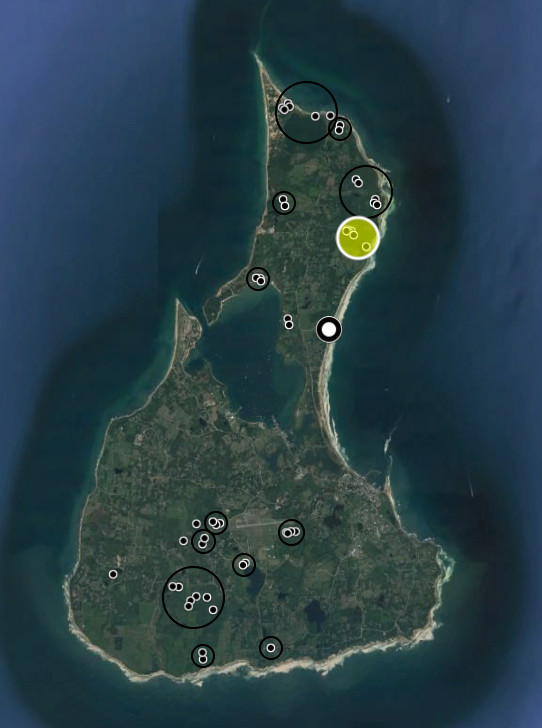
lorem ipsum

Hunt Property
This is the primary site surveyed, with more than half of all individual moths I have recorded since 2018 having been recorded here.
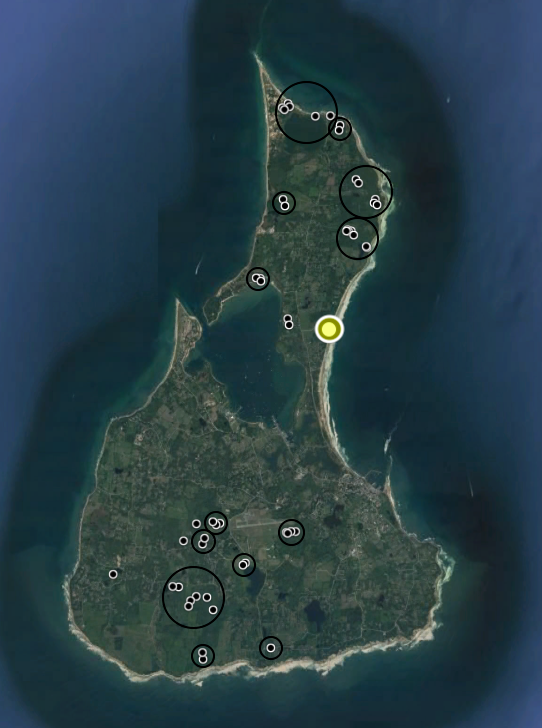
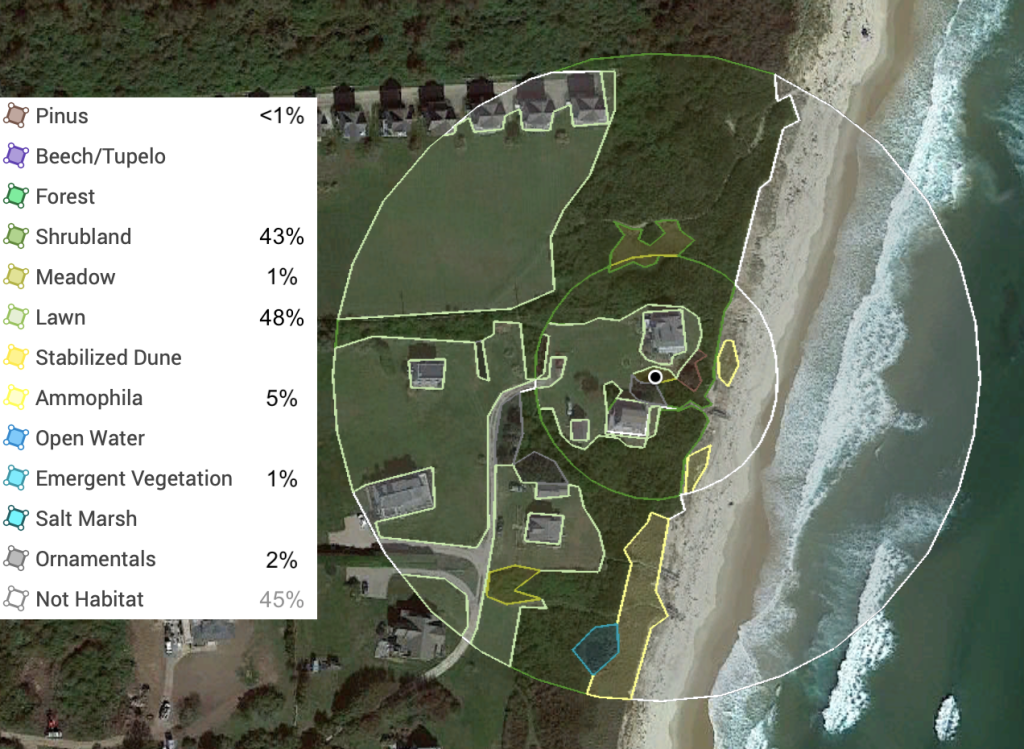
lorem ipsum
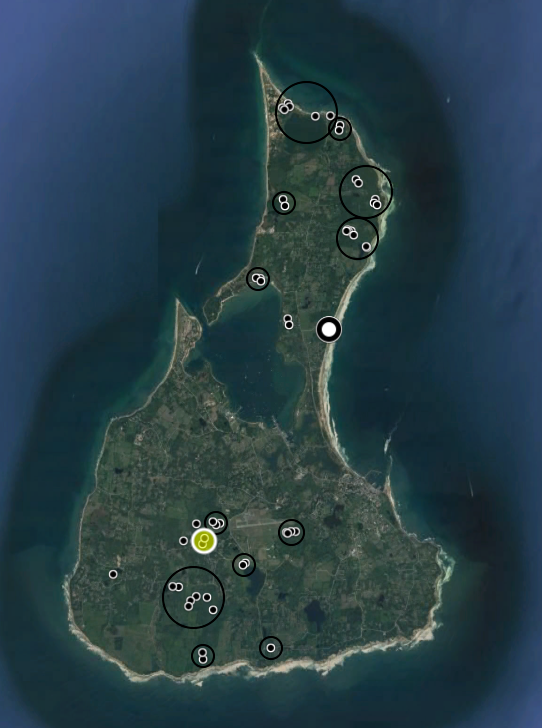
Nathan Mott Park north (NMn)
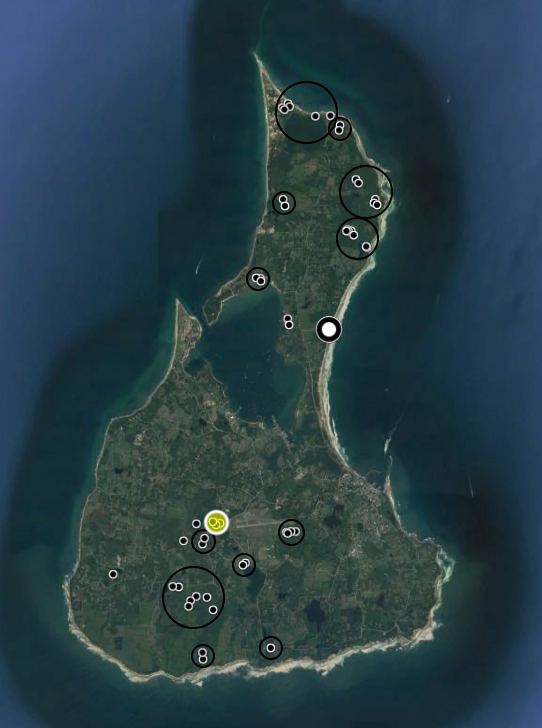
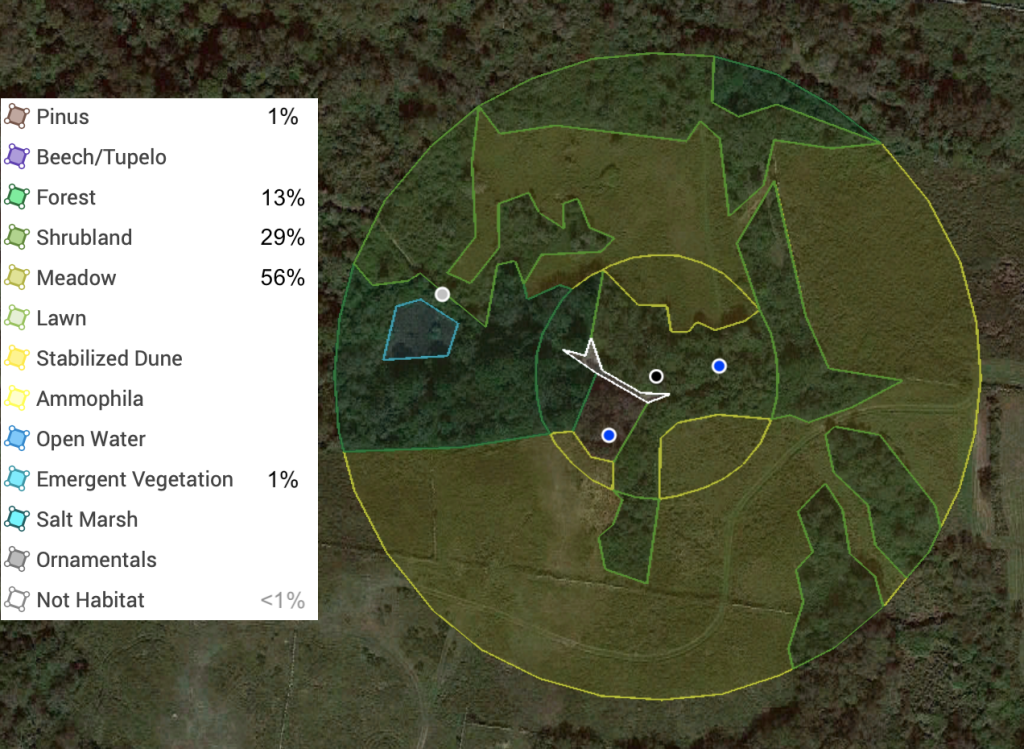

Scout Reserve (SR)
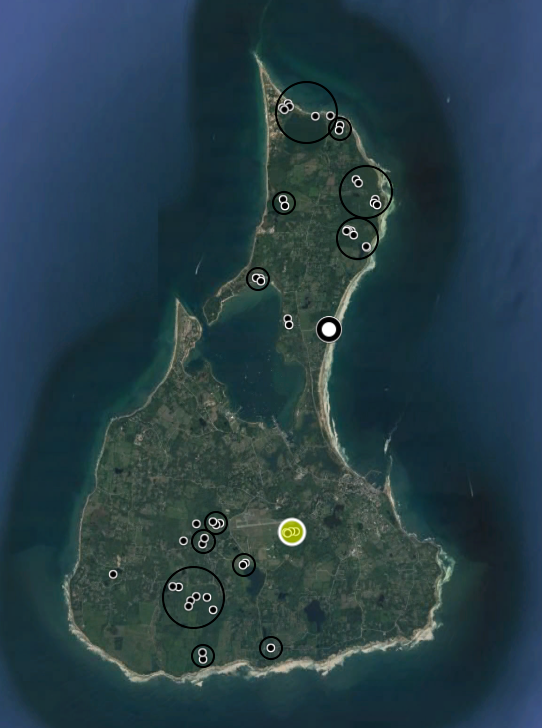
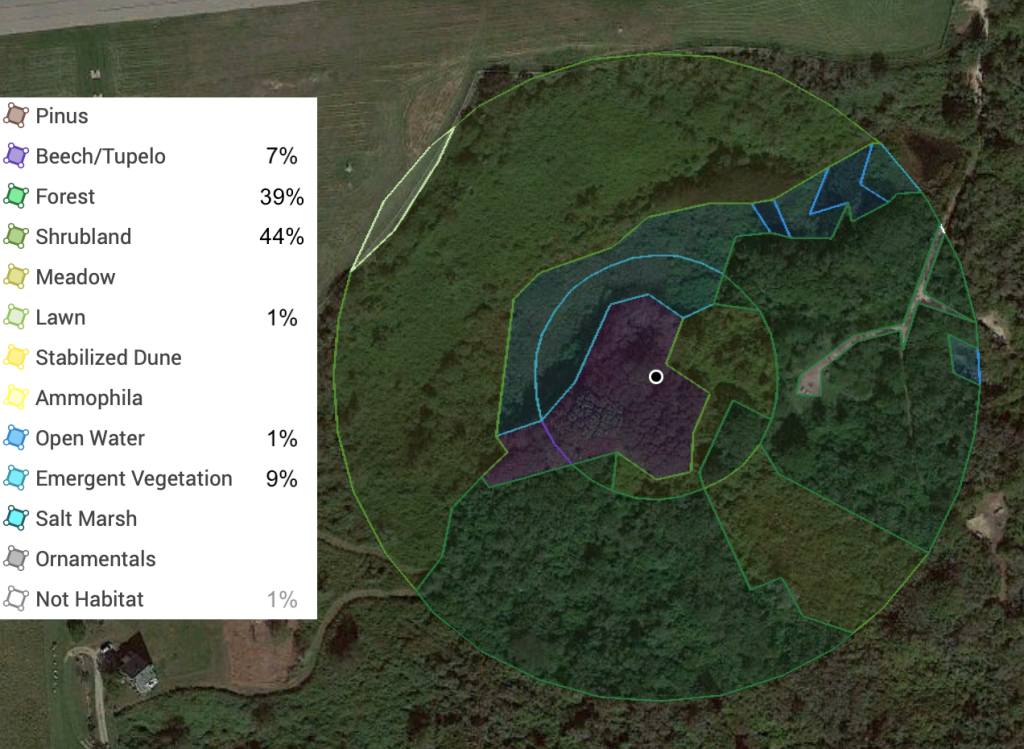

Myrica pensylvanica (bayberry)
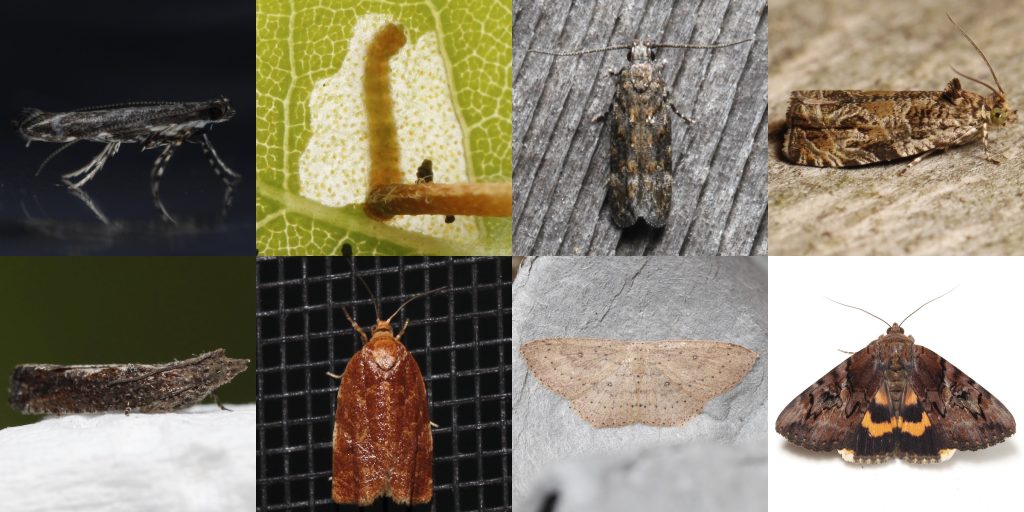
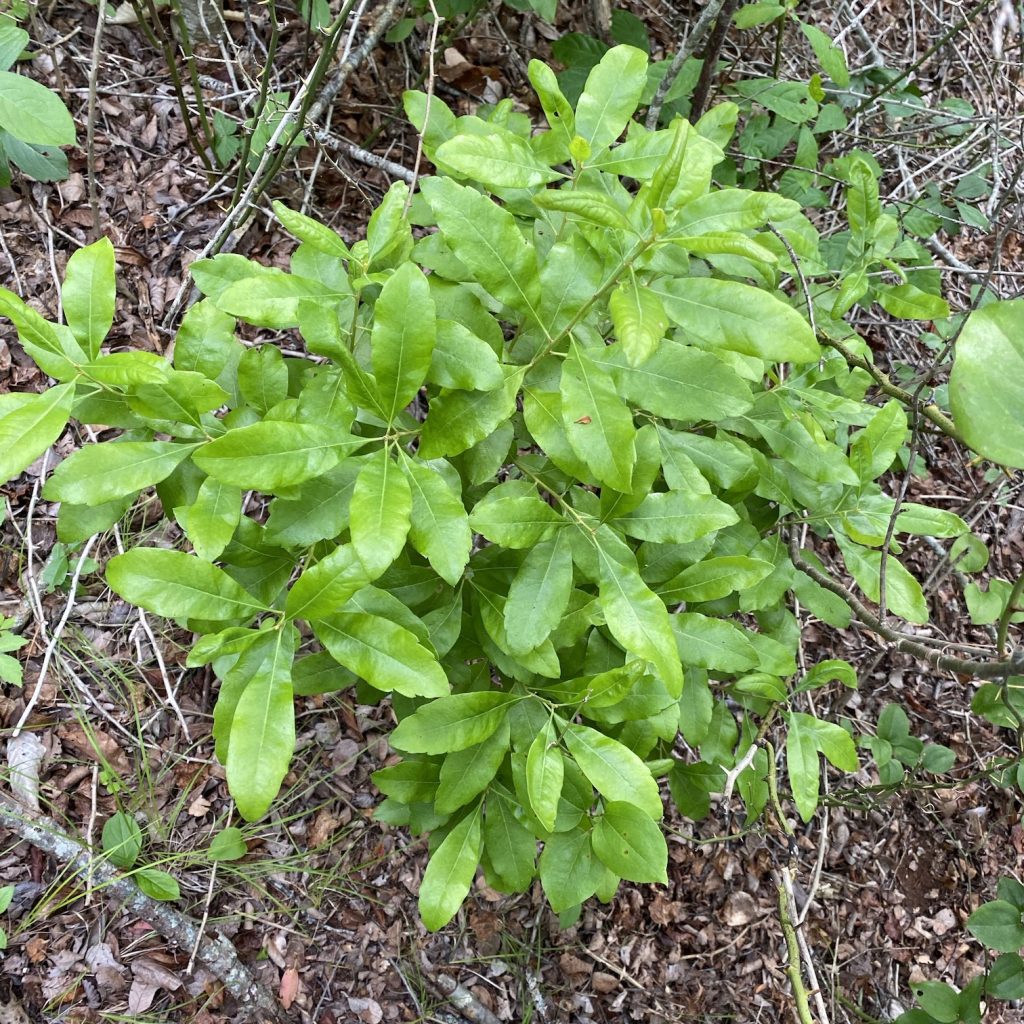
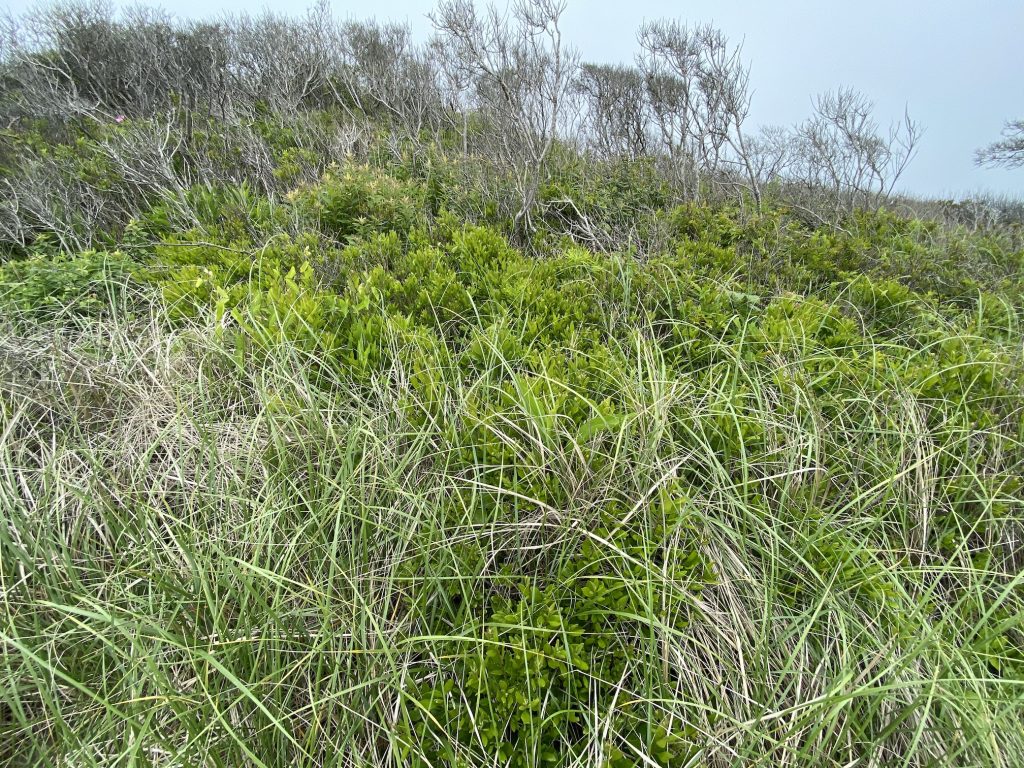
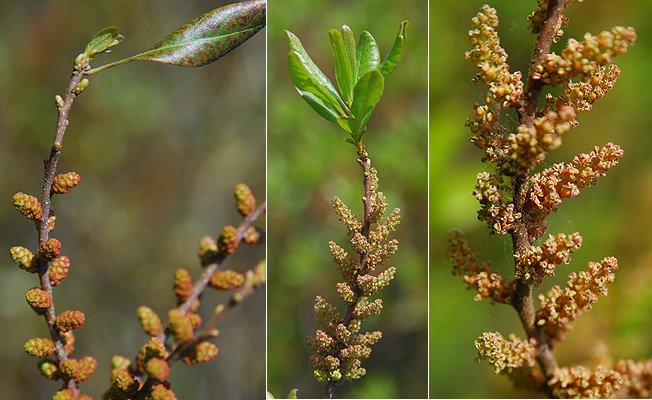
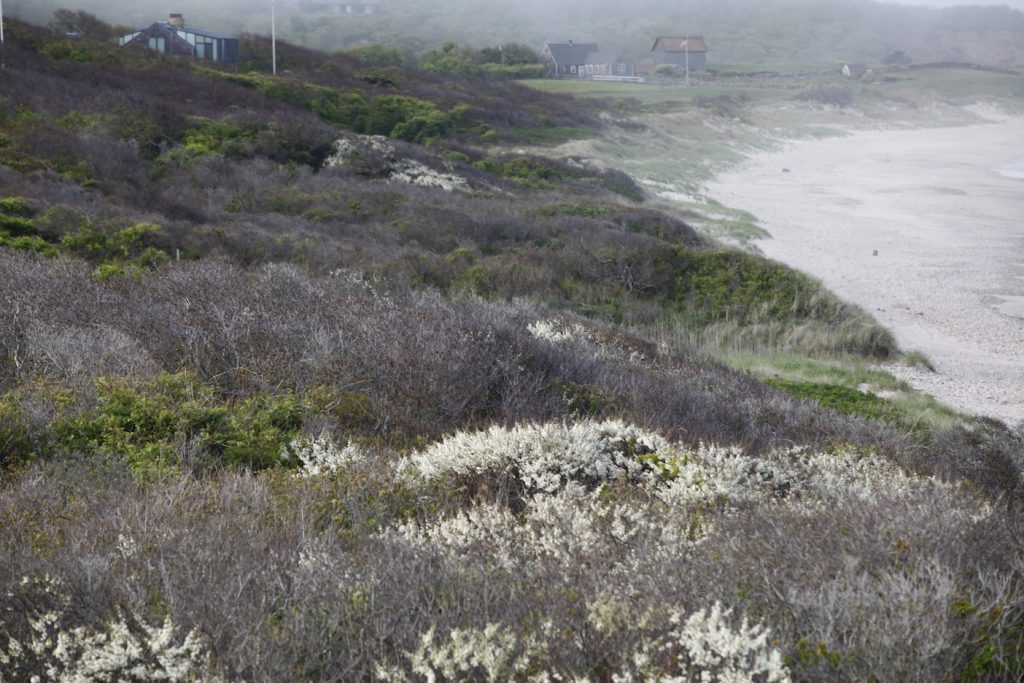
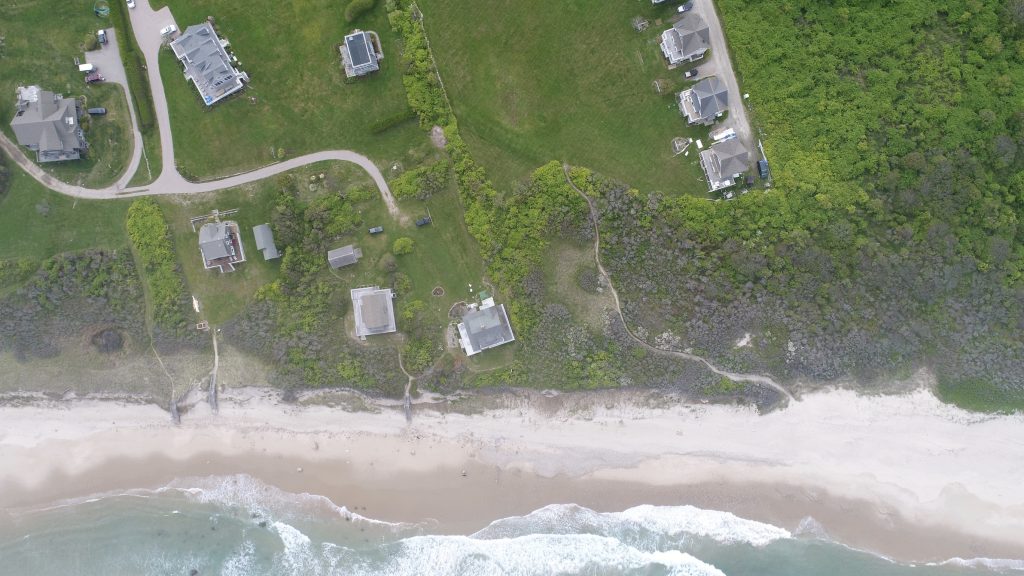
Specialists of bayberry (Myrica pensylvanica) on Block Island
Block Island’s populations of all the species listed below are presumed to rely exclusively on bayberry, which is the only species of Myricaceae present on the island. Other Myricaceae have been reported as suitable hosts for many of the species below. Coleophora comptoniella also feeds on Betulaceae, a family scarcely found on Block Island.
Nepticulidae
Stigmella myricafoliella (Busck, 1900) is a linear leafminer of Myricaceae. Larvae develop rapidly, making the species somewhat hard to rear despite being fairly common on Block Island. While mines of this species are easily distinguished from those of the four other bayberry specialist leafminers found on Block Island, they may be indistinguishable from those of Stigmella corylifoliella (Clemens, [1862]), an adult of which was collected at light on Block Island and confirmed by DNA barcode. S. corylifoliella is one of the most polyphagous leafmining moths known, having been reared from various Betulaceae, Ericaceae, Myricaceae, Rhamnaceae, and Rosaceae. The color of the larva (pale green in myricafoliella and yellow in corylifoliella) is thought to be a consistent character separating these species. Adults of both species are externally identical to each other and a number of other Stigmella species.
Heliozelidae
Aspilanta argentifera (Braun, 1927) is a blotch miner of Myricaceae. As in all Heliozelidae, the mature larva forms a portable case out of a pair of discs cut out of the upper and lower epidermis of its host leaf and drops to the ground to pupate in its case, leaving an oval-shaped hole at the edge of its completed mine. I have never seen mines of this species, but Mike Nelson and Dave Wagner reported finding them on Block Island in their 1998 survey of leafminers. Adults are externally identical to those of Aspilanta ampelopsifoliella (Braun, 1927), which feeds on Virginia creeper (Parthenocissus virginiana). Nelson and Wagner (1998) reported mines of A. ampelopsifoliella on Block Island, and I found a vacant mine in 2019. I have seen four unidentified adults of this genus.
Gracillariidae
Caloptilia flavella (Ely, 1915) forms an underside blotch mine in bayberry and feeds within a folded leaf in later instars. We have found three adults apparently belonging to this species in our survey but have not found mines. Nelson and Wagner (1998) reported this species.
Ornixolinae n. Gen. n. sp. mines leaves of Myricaceae. The larva initially forms a linear mine before entering the midrib and feeding within in for a time. The larva then leaves the midrib and forms a large, irregular blotch mine, exiting the mine to pupate on the leaf edge or elsewhere. The larva pupates within an oblong, white cocoon ornamented with a 20 or 30 froth spherules.
Cameraria picturatella (Braun, 1916) forms an upper surface blotch mine in bayberry. Mines are brownish and occupy most of the leaf surface when completed, making them highly conspicuous. In my limited experience, the rate of parasitism is very high. The species is common on Block Island, where it is univoltine, with larvae mining July into August. Adults evidently overwinter but are rare at lights, with records from August, September, and June.
Depressariidae
Agonopterix walsinghamella (Busck, 1902) is a leaftier of Myricaceae evidently rare on Block Island, with one rearing record and five adult records.
Coleophoridae
Coleophora comptoniella (McDunnough, 1926) is a case-bearing leafminer of Myricaceae and Betulaceae that eats a series of windows in multiple leaves of the host plant from within its leaf case. The species is univoltine on Block Island with adults on wing in July and August.
Gelechiidae
Neotelphusa n. sp. is a common leaftier of Myricaceae. The species is univoltine and flies mainly in July on Block Island.
Filatima confusatella Darlington, 1949
Aroga epigaeella (Chambers, 1881)
Tortricidae
Olethreutes myricana Kearfott, 1910 is a leaftier of bayberry univoltine on Block Island with adults on wing in summer. The species is currently treated as a junior synonym of Olethreutes sericoranum (Walsingham, 1879) in the MONA checklist. If this synonymy is unwarranted, O. myricana is a specialist of Myricaceae.
Strepsicrates smithiana Walsingham, 1891
Archips myricana (McDunnough, 1923)
Pyralidae
Acrobasis comptoniella Hulst, 1890
Geometridae
Cyclophora myrtaria (Guenée, [1858])
Erebidae
Catocala muliercula Guenée, 1852
Catocala badia badia Grote & Robinson, 1866
Host specialization unclear
Pyralidae: Condylolomia participalis Grote, 1873
Notodontidae: Coelodasys apicalis Grote & Robinson, 1866
This section of the website contains summaries of the local moth faunae feeding on particular plants on Block Island, with emphasis on host specialist species. So far, I have added pages for only a few taxa; additional groups to be included here eventually include goldenrod, blackberry, poison ivy and sumac, cherry, tupelo, and ferns.
Detailed discussion
Eastern baccharis (Baccharis halimifolia)
Bayberry (Myrica pensylvanica)
Species list only
Conifers (Pinales): Pinus thunbergii, Juniperus virginiana, others
This section of the site will detail the local ecology of each of the sites surveyed for moths on Block Island. Refer to the image below for survey area codes.
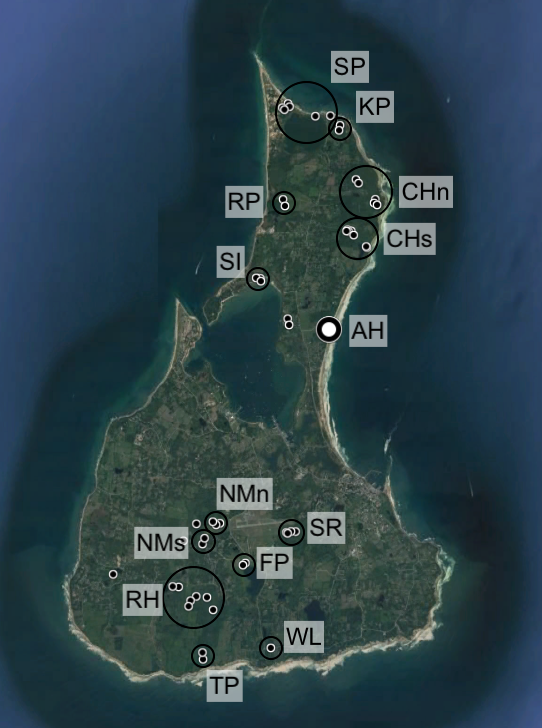
Below is a list of survey areas with the major local habitat types listed
AH — shrubland, meadow, lawn, dunes
SR — tupelo and beech forest, shrubland, cherry and shad forest, marsh
NMn — meadow, shrubland, black pine stand, cherry and shad forest
NMs — cherry and shad forest, pond
CHs — meadow, shrubland, cherry and shad forest, pond, marsh
CHn — cherry and shad forest, shrubland, pond, marsh
RH — cherry and shad forest, shrubland
RP — meadow, shrubland, marsh, dunes
SP — dunes, pond, marsh
SI — salt marsh, shrubland
TP — pine forest, cherry and shad forest, shrubland
FP — meadow, shrubland, pond
Eventually, this section of the site will include detailed analysis of the entire moth fauna of Block Island. For now, it includes mainly brief summaries of components of the fauna, namely families. Click on families from the list at the bottom of this page to find my summaries.
I so far have published treatments of two portions of Block Island’s moth fauna, Pterophoridae and Zygaenoidea. I plan to publish treatments of the remainder of the fauna in a series of special issues (all online only and open access) of Rhode Island Naturalist, the bulletin of the Rhode Island Natural History Survey (RINHS). An introductory article to this series may be found in the spring 2023 issue of the bulletin.
All major groups of macrolepidoptera are well-described, with only a small portion of species globally awaiting description. This permits straightforward comparisons of species diversity of the major groups globally, in North America, and on Block Island. More than 73,500 described species of macromoths occur worldwide; of these, more than 5,400 (7.3%) are found in the continental US and Canada. 540 species, or about 10% of the North American fauna, have been documented on Block Island.
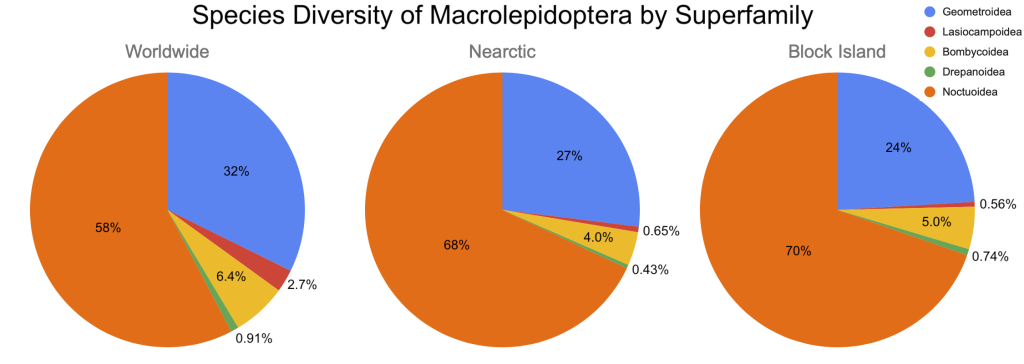
Taxonomic list of the moth families of Block Island with links to all family and superfamily pages on this site. Each linked page itself has a link to the corresponding node in the Identify section of the site. Asterisked families are represented on Block Island by only one species. Bolded taxa are those with published treatments.
Nepticuloidea: Nepticulidae, Opostegidae*
Adeloidea: Heliozelidae, Prodoxidae*
Tischerioidea: Tischeriidae
Tineoidea: Tineidae, Psychidae*
Gracillarioidea: Gracillariidae, Bucculatricidae
Yponomeutoidea: Yponomeutidae, Attevidae*, Plutellidae*, Glyphipterigidae, Argyresthiidae, Lyonetiidae, Bedelliidae*
Gelechioidea: Autostichidae, Lecithoceridae*, Oecophoridae, Depressariidae, Cosmopterigidae, Gelechiidae, Elachistidae, Coleophoridae, Batrachedridae, Scythrididae, Blastobasidae, Momphidae, Stathmopodidae
Pterophoroidea: Pterophoridae
Carposinoidea: Carposinidae*
Schreckensteinioidea: Schreckensteiniidae*
Choreutoidea: Choreutidae
Tortricoidea: Tortricidae
Cossoidea: Cossidae*, Sesiidae
Zygaenoidea: Zygaenidae, Limacodidae
Pyraloidea: Pyralidae, Crambidae
MACROLEPIDOPTERA
Drepanoidea: Drepanidae
Lasiocampoidea: Lasiocampidae
Bombycoidea: Saturniidae, Sphingidae
Geometroidea: Geometridae
Noctuoidea: Notodontidae, Erebidae, Euteliidae, Nolidae, Noctuidae